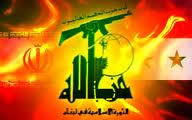
The other night I spoke to Alaa al-Sheikh, the Free Syrian Army’s Khaled Bin Waleed Brigade in Rastan, a city that’s home about 25,000 people and lies on the main Damascus-Aleppo highway in the province of Homs. Over the last several months, Rastan has become the frontline in the war between Syrian rebels and pro-Assad loyalists as well as a kind of de facto headquarters for the FSA. When I asked al-Sheikh about the rebels’ targeting of power lines and water mains in the country, I was surprised at his response. He said that this tactic was not in fact designed to rob the regime of electricity and water but rather to affect Lebanon: retaliation, he said, against Hezbollah’s provocations. “Hezbollah received information that the Iranians who were captured in Homs had been taken to north Syria,” he told me. “So Hezbollah started bombing us there with Katyushas. They fired around 21 rockets from near Al-Hermel in Lebanon, which is close to the Syrian border.”
The Iranians he’s referring to are seven nationals in FSA custody; five of them, the rebels insist, are members of the Iranian Revolutionary Guard Corps (IRGC) brought in to assist Assad’s Air Force intelligence in sniping. However, Syrian state media adamantly denies the allegation and insists that five Iranian engineers who were on their way to work at the Jandar power plant in Homs on 21 December were kidnapped by “terrorists”. Press TV, the Iranian regime’s propaganda outlet, says two more engineers were taken after they attempted to investigate the whereabouts of their missing colleagues.
Yet last week, James Hider and Nate Wright of the Times reported that Mahmoud Haj Hamad, the head financial auditor at the Syrian Defence Ministry who defected last month, confirmed that the Assad regime had indeed been paying “military consultants” from Iran and Hezbollah out of a US-dollar slush fund financed by Iran. These consultants, Hamad said, now number in the “thousands.”
Tehran’s facilitation of Assad’s brutality is matched by Moscow’s obstruction of any UN Security Council resolution that demands the dictator’s ouster, an obstruction that, even after yesterday’s intense diplomatic wrangling by the US, Europe and Arab states at Turtle Bay, shows absolutely no sign of abatement.
Clearly, Assad has used the Security Council deadlock to his advantage. In the last day, the regime has waged a comprehensive offensive and reprisal campaign in Idleb and the Damascus suburbs. One member of the Syrian Revolution Coordination Union (SRCU) told me yesterday that Rankous has been hit especially hard: there have been mass arrests, shabbiha gangs have confiscated cellphones and electronics, and houses have been burnt to the ground. Even animals, the SRCU activist said, have been killed “just for fun.”
Rastan, too, has been pounded by regular army forces, both with tanks shells and heavy artillery. “The army has used 130-millimetre towed field guns, which can hit a target at 28 kilometres,” al-Sheikh told me. “These are Russian-made. The tanks have pounded houses, one of which we saw collapse. It’s hard to say how many have been killed here because we are just now able to pull the bodies out from under the wreckage.” The rebels claim that yesterday they destroyed eight of the Syrian army’s tanks and captured four more in Rastan. A different activist told me that 300 more soldiers tried to defect but of them, 225 were killed by the loyalists they turned against.
“We hold the city right now,” al-Sheikh said of Rastan. But for how long? “A week, maybe two.” The aim is to weaken the regime by inflicting “painful” losses, not topple it, which is something the rebels can’t do so long as the regime receiving armaments and supplies from Iran and Russia. “Iran is sending weapons inside civilian airplanes,” al-Sheikh added, “landing in civilian airports.”
The only other “liberated” city in Syria is Zabadani, but the army now has it completely surrounded. Still, morale seems to be high among the FSA combatants. Al-Sheikh sent me the link to this YouTube video showing an urban side street littered with rubbish and rubble; out of a thick fog of pulverised concrete, a tank was being tentatively manoeuvred. “You see here, we captured a tank and they’re driving around in it,” he said, laughing. “Look at the driver, he is parking the tank like a taxi in front of his house.”
By: Michael Weiss
Telegraph.UK.
Leave a Reply
You must be logged in to post a comment.